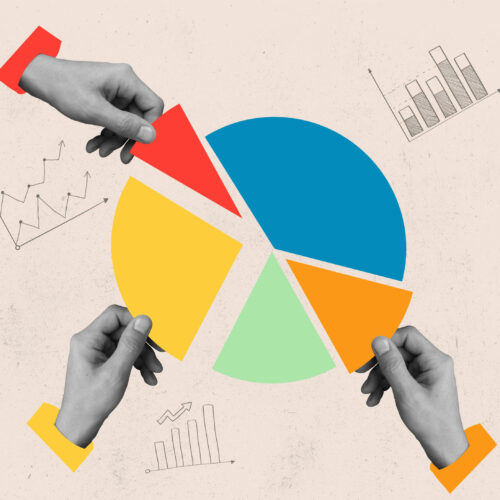You must start market research with a plan. The research design is the strategy that answers your research questions. It sets the tone for how you gather and analyze data.
What is Research Design?
Research design is the framework or conceptual structure within which research is carried out. It includes the research elements, methodologies, and processes the researcher uses to conduct a study. It allows researchers to set themselves up for success.
There are three main types of designs for research:
- Data collection
- Measurement
- Analysis
The research design used is based on the organization’s problem, and researchers select the tools and techniques during the design stage of the study.
A market research study aims to uncover the unknown or confirm assumptions and provide accurate and unbiased insights so they can be used for decision-making.
Here are the main characteristics of sound research design:
Get regular insights
Keep up to date with the latest insights from our research as well as all our company news in our free monthly newsletter.

1. Objectivity
The research findings should be objective so more than one person agrees with the results.
2. Reliability
If a similar research study is carried out repeatedly in a similar setting, it should yield similar results. The research results depend on how reliable the research design is. The way research questions are framed is crucial to the process.
3. Validity
Any measuring device is valid if it only measures what is expected to be measured.
4. Generalization
The information collected from a given sample should be representative and applied to a larger group from which the sample is drawn.
Research Design Elements
Research design creates an impact when it is unbiased and increases trust in the accuracy of the data collected. The essential elements of research design are:
- An objective purpose statement
- List of techniques to be implemented for collecting and analyzing data
- The methods applied for analyzing data
- The type of research methodology utilized
- Possible objections to research
- Settings for the research study
- Timeline
- Measurement of analysis
Research Design Types
The design of a research analysis can be broadly classified into quantitative and qualitative.
Qualitative research
Based on psychology, sociology, and anthropology principles, qualitative research is a market research method that obtains information and data using open-ended and conversational communication. It reveals what people think and the why behind their beliefs and behaviors.
Frequently used qualitative research methods:
- One-to-one Interviews
- Focus Groups
- Ethnographic Research
- Case Studies
- Record-Keeping
Quantitative research
It is for cases where statistical conclusions to collect actionable insights are essential. Numbers provide a better perspective for making critical business decisions. Quantitative research methods are necessary for the growth of any organization. Insights drawn from complex numerical data and analysis prove to be highly effective when making decisions about the business’s future.
There are many instances where brands need quantifiable data to make decisions. Quantitative research is a methodical exploration of phenomena by gathering quantifiable data from existing and potential customers using sampling methods, like sending out online surveys, online polls, and questionnaires.
You can further break down the types of research design into the following categories:
Descriptive research
When conducting this type of research, a researcher describes a situation or case. The researcher collects, analyzes, and presents collected data to provide insights into the why and how of the study.
Experimental research
This type of research is conducted using two sets of variables. The first set serves as a constant, which you use to measure the differences between the second set. It establishes a relationship between the cause and effect of a situation.
For instance, researchers may want to observe the influence of an independent variable, such as a price, on a dependent variable, such as brand loyalty.
- Pre-experimental research design
- True experimental research design
- Quasi-experimental research design
Correlational research
Unlike experimental research, correlational research is non-experimental and looks for variables that interact with each other. When one variable changes, you can infer how the other variable will change. There are three types of correlational research:
- Positive correlation,
- Negative correlation,
- No correlation
Diagnostic Research
In this research, the researcher evaluates the underlying cause of a defined problem or subject. This type of design usually has three important parts:
- The inception of issue
- Diagnosis of issue
- Solution for the issue
Explanatory research
This type of research investigates and explores something that has not been studied before or is yet to be explained well enough.
Explanatory research is responsible for finding the events’ what, why, and how by establishing cause-effect relationships.
There are four types of explanatory research:
- Literature research
- In-depth interviews
- Focus groups,
- Case studies
Research studies should be designed with the end in mind. The research design must be planned and methodical like any other project to get the desired, accurate, and unbiased results.
Kadence International helps leading brands make game-changing decisions. If you are looking for a research partner to help better understand your customers, we would love to help. Simply fill out our Request for a Proposal here.


 Senior Marketing Executive
Senior Marketing Executive Sales & Marketing
Sales & Marketing General Manager PR -Internal Communications & Government Affairs
General Manager PR -Internal Communications & Government Affairs Vital Strategies
Vital Strategies
 Customer Intelligence Director
Customer Intelligence Director